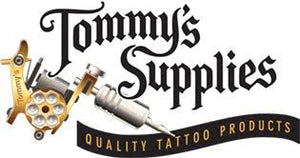What Makes a Good Tattoo Power Supply? 5 Key Features Every Artist Should Look For

TL;DR:
A high-quality tattoo power supply provides stable voltage, responsive controls, and enough range for both lining and shading. Look for models with precise digital readouts, memory presets, durable build quality, and compatibility with multiple machine types. Investing in a reliable power supply ensures smoother sessions and better results.
Introduction
Your power supply isn’t just a background accessory—it’s the heartbeat of your tattoo setup. Whether you’re using a rotary pen or a classic coil machine, the power supply affects everything from needle consistency to pigment saturation.
If you’re setting up a studio, upgrading your gear, or troubleshooting performance issues, this guide breaks down exactly what to look for in a quality tattoo power supply.
1. Reliability and Voltage Consistency
At the core of every good power supply is stability. Inconsistent voltage can result in:
- Uneven line work
- Ink blowouts
- Excessive skin trauma
- Unexpected stalling of the machine
Choose a unit that delivers clean, regulated power, even during long sessions. Many budget units can spike or dip under load, especially when using coil machines.
Look for models with built-in voltage regulators and low ripple noise (<1% deviation is ideal).
2. Adjustable Voltage Range (Lining vs. Shading)
Different techniques and machine types require different voltage ranges:
- Lining: 6–8V for precise and quick hits
- Shading/Color Packing: 7–10V for smooth, slower passes
A good supply should offer a broad and precise voltage range, ideally from 3–12 volts, with increments of at least 0.1V.
Pro tip: Choose a model with footswitch mode or continuous mode options to adapt your workflow.
3. Memory Presets
Time is money. Power supplies with programmable memory slots let you:
- Save voltage settings for different tasks (lining, shading, color)
- Quickly toggle between machine setups
- Speed up your session transitions
Some advanced units even allow touchscreen operation, footswitch-free modes, or Bluetooth connectivity with companion apps.
This is particularly useful for artists who use multiple machines or work in high-volume settings.
4. Responsiveness and Display Feedback
Real-time feedback helps you monitor your performance on the fly. Good power supplies include:
- Digital readouts of voltage
- Amp draw and duty cycle indicators
- Visual alerts for drops or surges
Some models also log usage time or support jump start functions (helpful for stiff rotary motors). The better the feedback, the more control you have over your machine’s behavior.
Displays should be backlit, glare-free, and easy to read under various lighting conditions.
5. Durable Build and Portability
Your power supply should be built to withstand studio life—or travel if you do guest spots and conventions. Key traits:
- Shock-resistant housing
- Reinforced input/output ports
- Non-slip base or magnetic mount
- Lightweight but rugged construction
Also consider:
- Universal compatibility (clip cord, RCA, and wireless adapters)
- Long power cable length
- Certifications (CE, RoHS, FCC)
At Tommy’s Supplies, we recommend units that combine industrial-grade parts with ergonomic designs, especially for artists who tattoo long hours.
Why the Right Power Supply Matters
A reliable power supply:
- Minimizes downtime
- Improves tattoo consistency
- Extends machine lifespan
- Reduces physical strain on the artist
- Keeps clients comfortable with efficient, smoother needle operation
Pairing it with high-quality tattoo machines and premium ink—like those sold at Tommy’s Supplies—gives you full control over your workflow.
Q: How much should I spend on a good power supply?
Expect to spend $100–$300+ for a professional-grade model. It’s a long-term investment that directly impacts your performance.
Q: Are wireless power supplies worth it?
Yes—for mobility and less clutter. However, ensure the battery is reliable, charges fast, and offers consistent voltage across full usage.
Q: Can I use one power supply for both rotary and coil machines?
Yes, but make sure it has a wide voltage range and responsive settings. Some advanced rotary pens may also benefit from jumpstart features.
Q: What happens if my voltage is unstable?
Unstable voltage causes uneven lines, poor saturation, and potential skin damage. Always check for regulated output and clean power.
Q: Should I buy a power supply with a footswitch?
Yes—especially if you prefer traditional control. Some units also offer footless modes for artists who prefer uninterrupted flow.
Conclusion
Your tattoo power supply is as important as your needle or ink. Don’t let inconsistent voltage, limited features, or cheap hardware undermine your work. Invest in a supply that delivers power cleanly, reliably, and with precision—because every great tattoo starts with stable energy.
Whether you’re a new apprentice or seasoned pro, Tommy’s Supplies offers studio-tested power supplies trusted by top artists. Explore our latest lineup and find the unit that keeps your work sharp and your sessions smooth.










